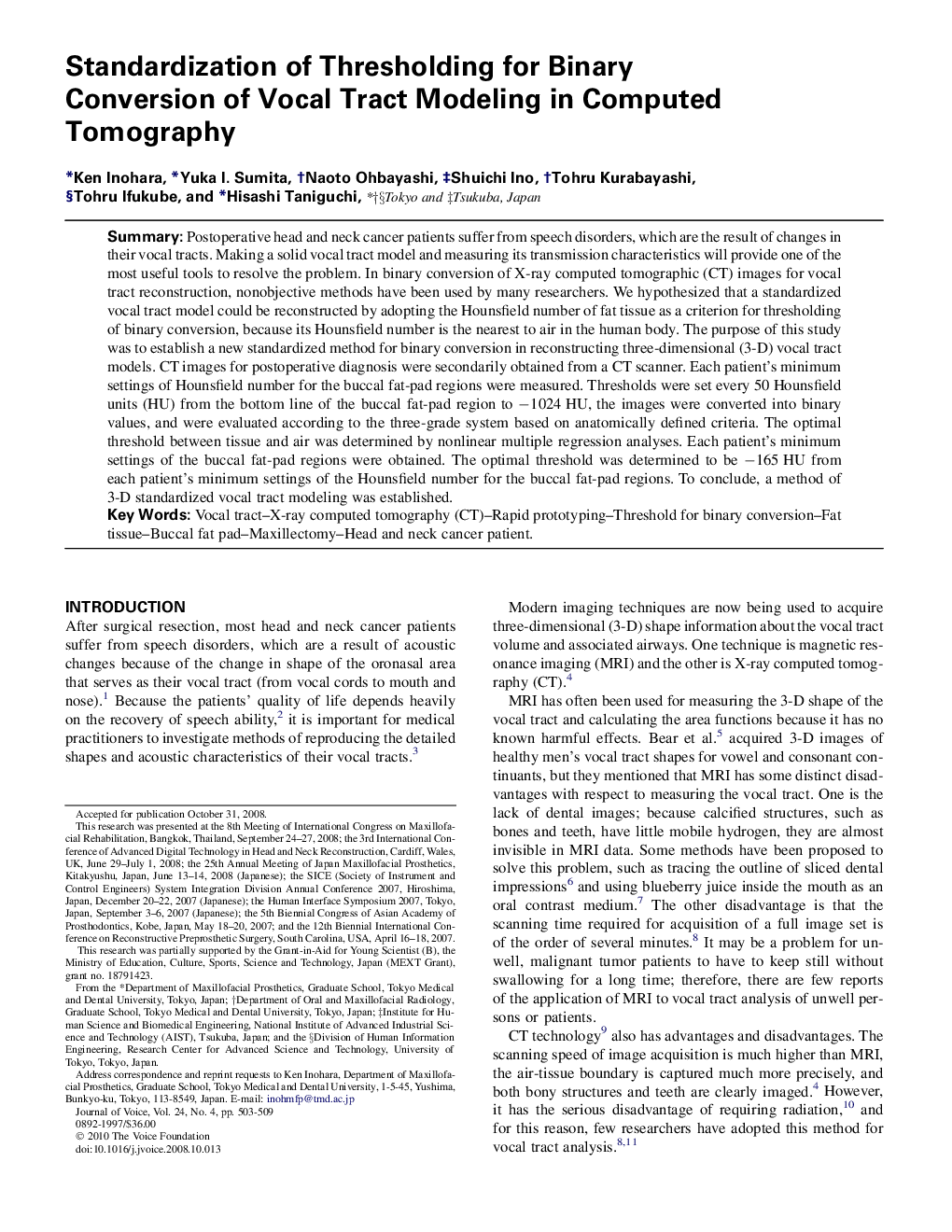| Article ID | Journal | Published Year | Pages | File Type |
|---|---|---|---|---|
| 1102709 | Journal of Voice | 2010 | 7 Pages |
SummaryPostoperative head and neck cancer patients suffer from speech disorders, which are the result of changes in their vocal tracts. Making a solid vocal tract model and measuring its transmission characteristics will provide one of the most useful tools to resolve the problem. In binary conversion of X-ray computed tomographic (CT) images for vocal tract reconstruction, nonobjective methods have been used by many researchers. We hypothesized that a standardized vocal tract model could be reconstructed by adopting the Hounsfield number of fat tissue as a criterion for thresholding of binary conversion, because its Hounsfield number is the nearest to air in the human body. The purpose of this study was to establish a new standardized method for binary conversion in reconstructing three-dimensional (3-D) vocal tract models. CT images for postoperative diagnosis were secondarily obtained from a CT scanner. Each patient's minimum settings of Hounsfield number for the buccal fat-pad regions were measured. Thresholds were set every 50 Hounsfield units (HU) from the bottom line of the buccal fat-pad region to −1024 HU, the images were converted into binary values, and were evaluated according to the three-grade system based on anatomically defined criteria. The optimal threshold between tissue and air was determined by nonlinear multiple regression analyses. Each patient's minimum settings of the buccal fat-pad regions were obtained. The optimal threshold was determined to be −165 HU from each patient's minimum settings of the Hounsfield number for the buccal fat-pad regions. To conclude, a method of 3-D standardized vocal tract modeling was established.
